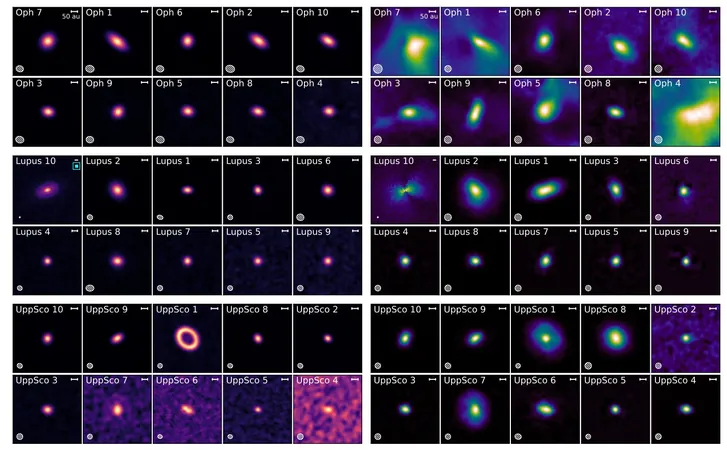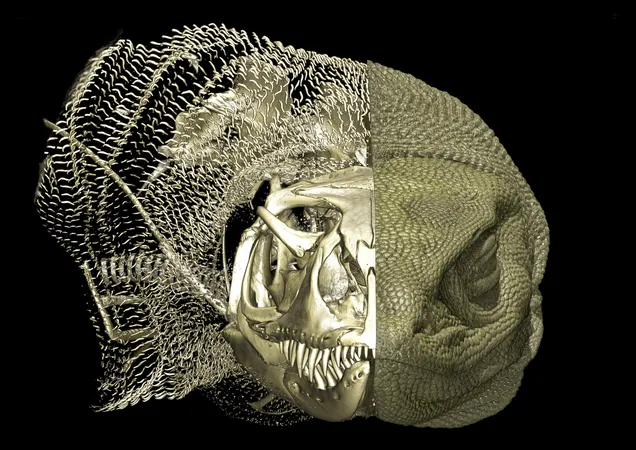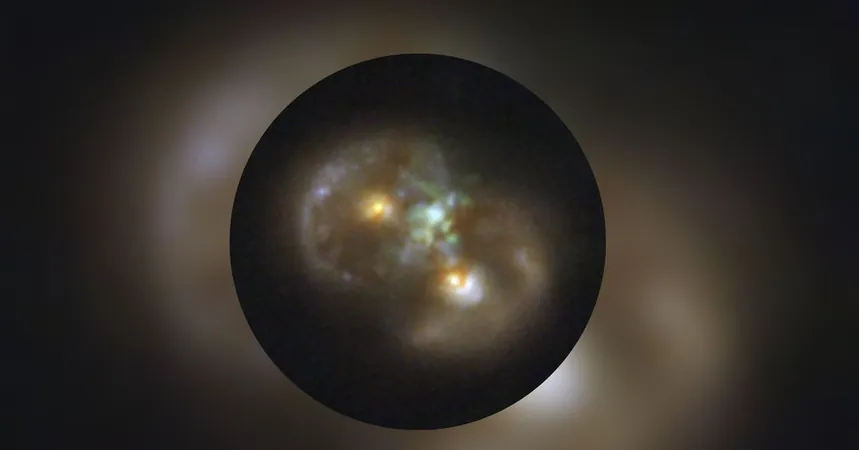
Astronomers Break New Ground in Understanding Planet Formation Around Young Stars
2025-06-16
Author: Nur
Unlocking the Secrets of Planet Formation
A groundbreaking study led by an international team from the University of Wisconsin–Madison has unveiled the most precise measurements yet of the gases swirling around young stars, offering pivotal insights into how planets form in evolving star systems. This discovery could shed light on whether planets developing in these systems will become rocky Earth-types, gas giants like Jupiter, or icy worlds akin to Neptune.
The Power of the Atacama Array
Utilizing a powerful array of 66 massive radio telescopes known as the Atacama Large Millimeter/submillimeter Array, situated high in the Chilean Andes, researchers meticulously examined the gas disks surrounding 30 young stars. These disks, rich in both gas and dust, serve as the foundational building blocks for future planetary systems.
Understanding Protoplanetary Disks
According to Ke "Coco" Zhang, the study's lead researcher and an astronomy professor at UW–Madison, grasping the mass within these protoplanetary disks is crucial for predicting how many and what kinds of planets may emerge from a star system. The stars studied ranged in age from less than 1 million years to over 5 million years—youthful phases in celestial terms.
The Early Days of Stars and Their Disks
Although five million years may seem ancient to us, Zhang emphasizes that these star systems are merely in their infancy, especially compared to our own solar system, which is approximately 4.5 billion years old. In their early stages, stars cradle protoplanetary disks predominantly made up of gas—around 99% hydrogen and helium versus 1% dust.
Revolutionizing Measurement Techniques
Leon Trapman, a postdoctoral researcher in Zhang's lab, showcased a game-changing approach by analyzing electromagnetic radiation signatures from the gas disks. Instead of relying on the previously used carbon monoxide ratios, which are not prevalent in the disks, the team focused on the more plentiful ion N2H+. This innovative method allowed them to measure how the gas content of the disks fluctuates over their first million years.
Critical Insights into Gas Loss
Findings indicate that the gas mass within these protoplanetary disks dwindles quickly in the first million years, slowing as time progresses, while dust remains present for far longer—vital for forming rocky planets like Earth. The research also hints at the phenomenon of gas being "blown" away from the disks by winds, creating new dynamics in the development of these celestial bodies.
Looking Ahead: The Role of James Webb Space Telescope
The team plans to build upon these findings by examining the chemical makeup of the innermost regions of protoplanetary disks where rocky planets are likely to form. With access to data from the James Webb Space Telescope (JWST), which excels in tracking warmer materials in these areas, researchers aim to analyze substances like water and organic compounds to gain deeper insights into the conditions surrounding planet formation.
Zhang concludes, "This research marks a significant leap toward understanding how the chemical composition of materials evolves as these disks change over time, ultimately shaping the planets that may inhabit these systems."



 Brasil (PT)
Brasil (PT)
 Canada (EN)
Canada (EN)
 Chile (ES)
Chile (ES)
 Česko (CS)
Česko (CS)
 대한민국 (KO)
대한민국 (KO)
 España (ES)
España (ES)
 France (FR)
France (FR)
 Hong Kong (EN)
Hong Kong (EN)
 Italia (IT)
Italia (IT)
 日本 (JA)
日本 (JA)
 Magyarország (HU)
Magyarország (HU)
 Norge (NO)
Norge (NO)
 Polska (PL)
Polska (PL)
 Schweiz (DE)
Schweiz (DE)
 Singapore (EN)
Singapore (EN)
 Sverige (SV)
Sverige (SV)
 Suomi (FI)
Suomi (FI)
 Türkiye (TR)
Türkiye (TR)
 الإمارات العربية المتحدة (AR)
الإمارات العربية المتحدة (AR)